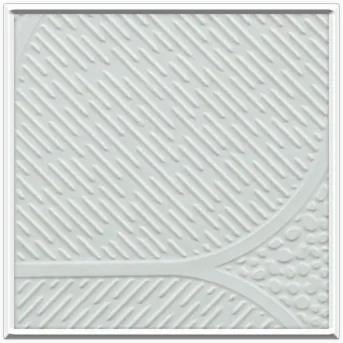Nov . 25, 2024 22:25 Back to list
suspended mineral fibre ceiling
Understanding Suspended Mineral Fibre Ceilings
Suspended mineral fibre ceilings, often referred to as drop ceilings or acoustic ceilings, are widely utilized in commercial and residential construction due to their aesthetic appeal, versatility, and functional benefits. Made from various materials, including fibreglass, mineral wool, and cement board, these ceilings provide both sound absorption and thermal insulation, making them an ideal choice for different environments.
One of the primary advantages of suspended mineral fibre ceilings is their acoustic performance. In spaces where sound control is necessary—such as offices, schools, and hospitals—these ceilings play a crucial role in absorbing sound waves, reducing noise pollution, and enhancing speech intelligibility. This is achieved through the porous nature of the materials used, which allows sound to be absorbed rather than reflected, creating a more comfortable and productive environment.
In addition to their acoustic properties, suspended mineral fibre ceilings offer excellent thermal insulation. They help maintain a building’s energy efficiency by reducing heat loss in winter and keeping interiors cooler in summer. This insulation quality can contribute significantly to lower energy costs, making them a cost-effective choice for building owners and managers.
suspended mineral fibre ceiling

Moreover, the aesthetic flexibility of suspended mineral fibre ceilings allows them to be integrated into various architectural styles. Available in numerous colors, textures, and patterns, these ceilings can enhance the visual appeal of any space. Whether a sleek, modern look is desired or a more traditional aesthetic, manufacturers offer a diverse range of options to meet design requirements. Additionally, they can be easily painted or modified, making it simple to refresh the look of a space without a complete renovation.
Installation is another key factor that makes suspended mineral fibre ceilings attractive. The system typically consists of a grid framework that hangs from the structure above, allowing easy placement of the mineral fibre panels. This design not only facilitates quick and efficient installation but also enables easy access to the plumbing, electrical wiring, and HVAC systems hidden above. Maintenance and repairs become more manageable as well, as panels can be individually removed and replaced without disrupting the entire ceiling.
However, while there are many benefits to suspended mineral fibre ceilings, there are considerations to keep in mind. These ceilings can be susceptible to moisture and humidity, which can affect their longevity and performance. In high-humidity areas, it is crucial to select specific types of mineral fibre ceilings that are designed to resist moisture and prevent sagging or mold growth. Furthermore, the choice of material and finish can impact their acoustic and thermal performance, so it is vital to work with knowledgeable suppliers or contractors.
In conclusion, suspended mineral fibre ceilings provide a multitude of advantages, from acoustic control to thermal insulation and aesthetic versatility. Their ease of installation and maintenance adds to their appeal, making them a popular choice for a variety of applications. However, potential challenges, particularly concerning moisture, should be considered during the selection and installation process. By understanding these factors, builders, architects, and property owners can make informed decisions that will enhance the functionality and appearance of their spaces, ultimately leading to better living and working environments.
-
Quality Ceiling Trap Doors & Access Panels | Easy & Secure AccessNewsAug.30,2025
-
Durable Ceiling T Grid Systems | Easy InstallationNewsAug.29,2025
-
PVC Gypsum Ceiling: Durable, Laminated Tiles for Modern SpacesNewsAug.28,2025
-
Pvc Gypsum Ceiling Is DurableNewsAug.21,2025
-
Mineral Fiber Board Is DurableNewsAug.21,2025
-
Ceiling Tile Clip Reusable DesignNewsAug.21,2025







